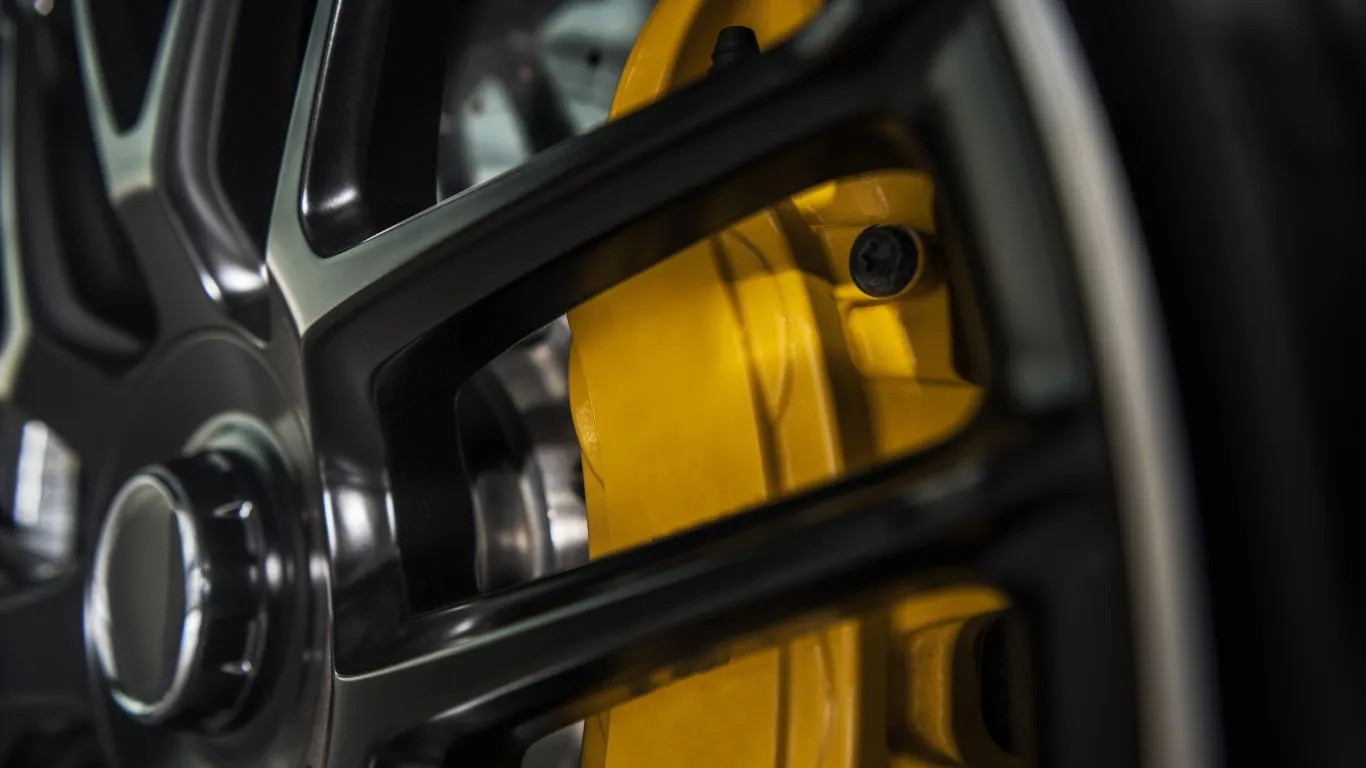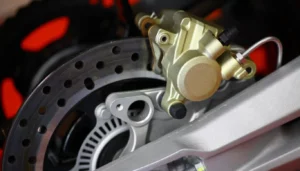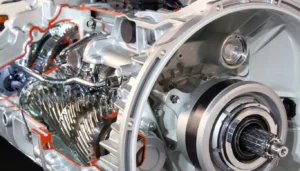Driver safety and performance on the road hinge heavily on proper vehicle maintenance, and paramount among these is brake upkeep. When your brakes are in good condition, you enjoy enhanced control over your vehicle, enabling you to react swiftly and appropriately to unexpected road situations.
Delving into routine brake maintenance can sound daunting, especially to those inexperienced with car care. But don’t worry, we’re here to guide you every step of the way. In this informative article, you’ll get a comprehensive walk-through, enabling you to understand and carry out key brake maintenance tasks to ensure your vehicle’s optimum performance and your safety.
Understanding the Importance of Brake Maintenance
As an integral part of your vehicle, routine brake maintenance assures safety and performance, keeping you, your passengers, and others on the road safe. With potential hazards lurking around every bend, ensuring your brakes are always in peak condition can never be overlooked. Every driver should know the basics of brake maintenance and its significance. Here’s why:
The Role of Brakes in Safe Driving
Your vehicle’s brakes are its primary safety feature. They allow you to control your speed, halt suddenly when necessary, and perform simple tasks like parking securely. Brakes that are in poor condition increase your risk of accidents, as reduced stopping power can make all the difference in a critical moment.
Brake Maintenance Enhances Performance
Regular brake maintenance doesn’t just ensure safety, but also improves the overall performance of your vehicle. Well-maintained brakes provide better stopping power and control, ensuring a smoother and more responsive driving experience. This, in turn, contributes to the longevity of your vehicle, helping you to prevent expensive repair costs in the future.
Signs That Your Brakes Need Maintenance
Recognizing when your brakes need attention is key. Warning signs include: a squeaking or grinding noise when you apply the brakes, the brake warning light illuminating on your dashboard, a spongy or resistant brake pedal, or your car pulling to one side when braking. If you experience any of these symptoms, it’s essential to get your brakes checked immediately.
Maintaining Your Brakes: What to Do
Regular inspections and immediate response to warning signs can help extend your brakes’ life. Keep an eye on your fluids, especially your brake fluid, as it’s vital for your brakes’ functioning. Next, pay attention to your brake pads. They bear the brunt of the stopping power, and if worn, should be replaced. Finally, ensure that your brake rotors, which help dissipate the heat generated from braking, are in good condition and free from warping or damage.
Signs That It’s Time for Brake Maintenance
to know when it is time for brake maintenance can save you from potential disasters. Recognizing these signs early = ensures your vehicle’s performance and guarantees safety on the road. This section will look deeper into these warning signs and provide you with a step-by-step guide on what to do when they occur.
Unusual Noises
Keep your ears open for any strange noises while braking. A screeching, grinding, or clicking noise is an indication that your brake pads are worn out and need to be replaced. Neglecting this sign can lead to further damage and costly repairs.
Indicator Lights
Your car’s brake light on the dashboard is a clear and straightforward indication that something might be off. While it often means that your parking brake is engaged, it could also signify a more serious problem. Always investigate the cause of this signal promptly.
Brake Pedal Feel
Pay close attention to the feel of your brake pedal. If it feels spongy or requires more pressure than usual to depress, it’s a sign of a potential issue. This could be due to air in the brake lines or a problem with the master cylinder.
Vehicle Pulling to One Side
If your vehicle pulls to the left or right side when braking, this might indicate an issue with the brake lines or wear of the brake linings. In this, case it’s important to take your car to a professional for proper diagnosis and repair.
Quick Brake Maintenance Steps
If you notice any of these signs, here are some quick steps to undertake:
- Start by checking your brake pads. If they’re less than a quarter of an inch thick, you should replace them.
- Examine the brake fluid. It should be clear and light in color. Dark fluid indicates contamination and needs to be drained and replaced.
- Listen for noises or vibrations during braking. If anything sounds or feels unusual, seek professional help.
- Ensure your vehicle’s alignment is correct. If your vehicle pulls to one side, an alignment adjustment might be necessary.
Consistency is key in brake maintenance. Frequent checks and timely repairs help to maintain the optimal functioning of your vehicle and ensure safety on the road.
Gathering the Necessary Tools and Supplies
When engaging in brake maintenance, a crucial pre-step is to gather all the necessary tools and supplies. Having everything at hand smoothly streamlines the process, preventing potential frustrations and delays from missing supplies. In the following sections, we will delve into what exactly you need to perform brake maintenance effectively.
Appropriate Tools
First off, it’s important to have the right tools on hand. This includes a sturdy jack to lift your car, a lug wrench for tire removal, and a set of wrenches or a ratchet and socket set to use on the brake assembly. Additionally, a can of brake cleaner and a wire brush will prove useful for cleaning and maintenance.
Brake Components
Depending on the level of maintenance your brakes require, you may need new brake pads or even a new set of rotors. Remember to purchase components specific to your vehicle make and model to ensure compatibility.
Protective Gear
Brake maintenance can get messy, and it’s also important to protect yourself. Gloves will keep your hands clean and protect them from possible injury, while safety glasses will shield your eyes from any debris or brake fluid that might end up airborne.
Brake Fluid
You’ll also need a canister of brake fluid specific to your vehicle’s requirements. Brake fluid plays a crucial role in transmitting force from your foot to the brakes, and it’s crucial to keep this fluid fresh and topped up to ensure optimal brake performance.
Preparing Your Vehicle for Brake Maintenance
Before you roll up your sleeves and start working on brake maintenance, it’s absolutely critical to prepare your vehicle adequately. This preparation stage is equally as important as the actual maintenance procedure, ensuring both safety and efficiency throughout the process. Let’s delve into the specific steps of preparing your vehicle for brake maintenance.
Safely Parking and Supporting Your Vehicle
Start off by parking your vehicle on a flat, sturdy surface to prevent any potential slippage. To guard further against movement, engage the parking brake and, for good measure, place wheel chocks at the rear wheels. If you’re working on the front brakes, raise the vehicle using a jack and secure it with jack stands to prevent any accidental falls.
Determining Brake Type and Accessing Brakes
Depending on your vehicle, you may have either disc or drum brakes. It’s important to figure out the type of brakes your vehicle uses, as this directly influences your maintenance steps. Once you’ve established this, remove the wheels to access the brakes. This generally involves loosening the lug nuts with a lug wrench, raising the car as described above, and then fully unscrewing the lug nuts to remove the wheel.
Adequate Lighting and Work Space
Ensure you have bright, focused lighting in your workspace so you can easily see and access all components of your brake system. Also, keep your tools and parts well-organized in the workspace to minimize time wasted searching for them when needed.
Inspecting the Brake Pads and Rotors
Let’s delve deeper into the health of your vehicle by examining the brake pads and rotors. This crucial step is fundamental in ensuring that your brake system performs optimally, promoting not just performance, but safety as well. Meticulous inspection aids in early detection of any possible issues that might compromise the efficiency of the brakes.
Distinguishing Worn-out Brake Pads
Identifying worn-out brake pads is a critical part of the inspection process. Worn-out pads can cause metal on metal grinding, leading to more severe damage. To identify worn-out brake pads, look for a smooth or glossy appearance and a thickness less than a quarter of an inch.
Checking the Rotors
The rotors are another crucial component of your brake system. They should appear smooth and undamaged. If there are grooves or heavy scoring on your rotors, or they feel uneven to the touch, this indicates that they need to be replaced. Moreover, pay attention to any sign of discoloration or visible cracks.
Listening for Noises
Transfer your inspection onto an auditory level. Unusual brake noise can signal a problem with your brake pads or rotors. Listen for any grinding or screeching sounds when the brakes are applied.
Feeling for Vibrations
Lastly, don’t ignore any vibrations or pulsations felt in the brake pedal. It could indicate warped rotors. Warped rotors will cause a pulsating feeling through your brake pedal when you apply the brakes and should be addressed promptly.
Replacing Worn Brake Pads
It’s crucial to replace your brake pads immediately once you’ve discovered that they are worn out. This step enhances your vehicle’s performance, gives you better control during braking, and most importantly, ensures your safety on the road. Let’s quickly dive into how you can replace your worn brake pads.
Order New Brake Pads
First and foremost, you need to order high-quality brake pads that match the specifications of your vehicle. You can find this information in your vehicle’s owner manual or reach out to a professional if you’re unsure.
Remove the Old Brake Pads
Before installing the new ones, you have to remove the old brake pads. Start by removing the wheel, then locate the brake caliper and remove it. The brake pads are held in place by clips or pins that you’ll need to detach. Remember, keep track of all the small parts so you can use them with your new pads.
Install the New Brake Pads
Once you’ve cleanly removed the old brake pads, it’s time to install the new ones. Clip or pin the new brake pads in place, then replace the brake caliper. Now, you can return the wheel to its regular position. Repeat this process for all affected wheels.
Test Your Vehicle
Finally, once all the new brake pads have been installed, it’s crucial to do a brake test. Start slow with gentle brakes and gradually increase your speed, testing how quickly and effectively your vehicle reacts to braking.
Note: An important safety tip! If you’re not completely confident in your ability to perform this, it’s strongly recommended to hire a professional.
Checking the Brake Fluid Level and Quality
As a vital part of your vehicle’s brake system, brake fluid plays a critical role in ensuring your safety on the road. It’s the lifeblood that applies the force from your foot on the brake pedal to the wheel hub, slowing or stopping your vehicle. Therefore, routinely checking and maintaining the brake fluid’s level and quality is important.
Evaluating Brake Fluid Level
Your car’s brake fluid reservoir is typically located in the engine bay and is clearly marked. To check the level, take a look at the translucent reservoir. The brake fluid should be between the ‘Min’ and ‘Max’ marking. If the fluid level is below the ‘Min’ line, this could indicate a leak or that your brake pads are worn out and need replacing.
Assessing Brake Fluid Quality
Brake fluid is typically a clear, amber-colored liquid. Over time due to heat and contamination, its color can change to a murky brown, indicating it is time for a replacement. If the fluid appears milky or has visible particles, it indicates severe contamination, possibly from a leak, and should be addressed immediately.
Maintaining Brake Fluid Level and Quality
To maintain proper brake function, it’s advisable to replace your brake fluid every 1-2 years or as per your vehicle manufacturer’s recommendation. Use the exact type recommended since different fluids have different boiling points and properties. When adding or changing fluid, ensure the reservoir is clean to avoid introducing dirt or contaminants. After refilling, remember to securely tighten the cap.
Professional Brake Fluid Inspection
While these checks can be done at home, it’s always a good idea to have your brake fluid professionally inspected during your routine car service. Professionals have the right tools and expertise to appropriately judge fluid quality and detect problems that might be missed otherwise.
Bleeding the Brake System
Regular brake maintenance isn’t complete without properly bleeding your brake system. The bleeding process removes any air bubbles trapped within your brake lines that could interfere with braking pressure, ensuring your vehicle stops efficiently when needed. Now, let’s delve into the specifics.
Understanding the Need for Bleeding
Bleeding your brake system might sound intimidating, but it’s an essential procedure. Air bubbles within the brake lines can reduce the braking force, making your drive unsafe. Additionally, these air bubbles could lead to moisture buildup, causing corrosion in your brake system over time.
Safety First: Preparations for Bleeding
Before starting, make sure you’re wearing suitable protective gear to prevent brake fluid from coming into contact with your skin or eyes. It’s also crucial to have the correct tools, including a wrench suitable for your vehicle’s bleeder valves, a clear hose, and a container for the old brake fluid.
The Bleeding Process
Bleeding your brakes involves opening the bleeder valves, one at a time, starting from the wheel furthest from the driver and working your way closer. As the valves open, any trapped air bubbles are released, and old brake fluid drains out. Simultaneously, new brake fluid is gradually added to the master cylinder until you see fresh fluid leaving the bleeder valve, with no air bubbles.
Confirming the Success of Bleeding
Once you’ve bled all the brake lines, it’s time to confirm the process was successful. With the car switched off, the brake pedal should feel firm underfoot and not sink to the floor. By starting the car and maintaining pressure on the brake pedal, you’ll feel an even more firm response, an indication of a job well done.
Inspecting and Replacing Brake Lines
Regular inspections of your brake lines are essential, not only to ensure proper performance but also to keep your vehicle safe. Faulty brake lines can lead to brake fluid leakage, which can drastically reduce braking efficiency. Let’s delve into how to inspect these crucial components of your braking system, and when necessary, replace them.
Locating the Brake Lines
Your brake lines run from the master cylinder to each wheel. They are typically made of steel tubing and have flexible sections near the wheels to accommodate movement. Grab a flashlight and inspect these lines for any signs of wear and tear, especially where they join the flexible hoses.
Detecting Brake Line Issues
Rust, visible fluid leaks, and cracks are clear indications of faulty brake lines. You might also notice a lower brake fluid level, a spongy brake pedal, or unresponsive brakes, all of which can signal potential brake line issues.
Replacing Brake Lines
If you find any faults in your brake lines, it’s crucial to replace them without delay. You may need professional help unless you’re comfortable with DIY auto maintenance. The process involves removing the faulty line, creating a replica with new tubing, and then installing it.
Checking Your Work
After replacing your brake lines, always double-check your work. Run your fingers along the lines to feel for any leaks. Then, start your vehicle and press the brake pedal hard several times. Recheck the lines for leaks and ensure that the pedal feels firm and responds promptly.
Cleaning and Lubricating Brake Calipers
The final step in your comprehensive brake maintenance routine involves cleaning and lubricating your vehicle’s brake calipers. Over time, calipers can accumulate dirt and dust, which can hinder their performance and potentially cause squeaking or other noises. By keeping them clean and well-lubricated, you ensure they function smoothly, resulting in a safer and more efficient braking system.
Identifying the Brake Calipers
First, you need to locate your brake calipers. These are usually found enclosing the brake pads and rotor. Identifying the calipers is crucial, as they perform the all-important task of clamping the brake pads onto the rotors to stop your car.
Cleaning the Brake Calipers
Once located, spray a car-specific degreaser onto the calipers. Leave it on for a few minutes and then clean it off with a scrub brush and clean water. Remember to protect your hands with gloves and your eyes with goggles, to guard against any backlash of degreaser or brake dust.
Lubricating the Brake Calipers
After drying the calipers, it’s time to lubricate them. Using a high-temperature brake grease is ideal. Apply the grease to the moving parts of the caliper, but avoid getting any on the brake pads or rotors. This will ensure that the caliper operates smoothly, and this maintenance task can considerably extend the longevity of your brakes.
Re-checking Brake Calipers
Once everything is cleaned and lubricated, give a quick re-check to the brake calipers to make sure that no lubricant has got onto your brake pads or rotor, as this could detrimentally impact their function. Also, check that the caliper is able to move freely on its guide pins. A freely moving caliper is essential for efficient braking.
Completion of Brake Caliper Maintenance
By following these steps, you’ve now successfully completed the vital process of cleaning and lubricating your brake calipers. Along with the rest of the brake maintenance tasks carried out, you now have a brake system ready to perform optimally, ensuring a safer and smoother ride.
Examining the Brake Master Cylinder
The brake master cylinder is a fundamental component of your vehicle’s braking system. It’s the heart of the hydraulic system that powers your brakes, transforming the pressure you put on the brake pedal into hydraulic pressure to control the brake calipers. Regular inspection of the brake master cylinder is crucial to ensure the optimum functionality of your brakes.
Locating the Master Cylinder
Start by locating your vehicle’s brake master cylinder. You’ll usually find it mounted on the car’s firewall, directly behind the brake pedal. It’s a cylindrical metal tank, often identified by its plastic reservoir filled with brake fluid.
Checking for External Damage
Look for any signs of external damage, such as leaks or rusting on the brake master cylinder. Leaks may indicate a seal failure, while rust can lead to potential failures in the future.
Inspecting the Fluid Level
The brake fluid reservoir should be checked for correct fluid level and color. A low fluid level can indicate a leak somewhere in the brake system, while darkened fluid suggests it’s overdue for a change.
Pressing the Brake Pedal
Press on the brake pedal while your car is running. If it feels spongy or sinks to the floor, it might indicate problems within the master cylinder.
Professional Inspection Option
If you’re unsure about the condition of your brake master cylinder or if you detect any problems, it’s wise to consult a professional mechanic for a thorough inspection. They have the necessary tools and expertise to diagnose and repair any issues correctly.
Inspecting and Adjusting the Parking Brake
While the main braking system of your vehicle is crucial for regular driving, the parking brake is an equally essential component for when your vehicle is stationary. Its primary function is preventing your vehicle from rolling when parked on an incline, but it also serves as an emergency brake if your main braking system fails. Therefore, it’s critical to keep it in optimal condition.
Examining the Parking Brake
Regular inspection of your parking brake is a must. Start by checking its resistance – if you find it too loose or too tight while engaging, it may need adjustment. An adequately functioning parking brake should have a resistance but should not require excessive force to engage. Additionally, observe your vehicle when the parking brake is engaged. If it tends to roll, the parking brake isn’t doing its job, suggesting a crucial need for maintenance.
Adjusting the Parking Brake
Maintaining the efficiency of your parking brake may often require adjusting it. Typically, this process involves tightening or loosening the parking brake cable, depending upon the results of your check. Your vehicle’s manual should provide specific instructions on how to adjust the brake. However, if you’re not comfortable doing this yourself, visiting a professional mechanic is always a wise decision.
Symptoms of a Faulty Parking Brake
There are several telltale signs that your parking brake requires attention. Difficulty while engaging the brake, a warning light on your dashboard, or unusual sounds when the brake is applied may all indicate that the parking brake needs servicing. If you observe any such signs, your safest bet is to get it inspected and serviced without delay.
Maintaining Regular Parking Brake Checks
The key to keeping your vehicle’s parking brake at peak performance is regular inspection and timely maintenance. Depending on how frequently you use the parking brake, experts recommend checking it at least once a year. More importantly, always remember that ignoring minor issues could lead to significant, costly repairs later on.
Testing the Brakes for Proper Functionality
At the culmination of your routine brake maintenance efforts, testing the brakes to ensure they’re working as expected is a crucial step. After all, you want to be confident that your hard work has produced effective, safe results. Let’s walk through the steps to properly test your brakes after maintenance.
Inspect Brake Light Operations
Begin the check-up by turning on your car and pressing the brake pedal. Make sure that your brake lights are functioning properly. Non-functioning brake lights could be a sign of an underlying issue or could simply mean that the bulbs need to be replaced.
Press the Brake Pedal: Feel Its Resistance
Next, while the engine is running, apply pressure to the brake pedal. It should offer some resistance and not sink to the floor. A pedal that sinks to the floor can indicate a problem with your brake system that warrants further investigation.
Conduct a Parking Test
Find a safe location where you can test the brakes effectively without disturbing the traffic. It can be in an empty parking lot or a quiet street. Start by driving at a slow speed, then apply the brakes. They should bring your vehicle to a stop smoothly and not cause any juddering or unusual noises.
Perform a Road Test
Once the parking test is successful, progress to a road test. Drive around your neighborhood at moderate speed. Pay attention to the vehicle’s response when you apply the brakes. The car should maintain a straight line when braking and not swerve to any side.
Professional Inspection
If you find any issues during these tests or if anything feels off, don’t hesitate to take your vehicle to a professional for a more thorough inspection. It’s always better to err on the side of caution when it comes to your safety and that of others on the road.
Tips for Extending the Life of Your Brakes
Keeping your brakes in good condition isn’t just about performing maintenance checks. There are several driving practices that can also play a significant role in ensuring your brakes’ longevity. By observing these, you can go a long way in ensuring your brakes serve you optimally for a longer duration. Here are some useful tips to help prolong your brakes’ life.
Smooth Braking
Aggressive braking can quickly wear out your brakes. Instead, practice smooth, gradual braking. It ensures less strain on your brakes and extends their lifespan.
Reduce Speed
When you drive at a high speed, your brakes need to work harder to reduce the car’s momentum. By reducing your speed, you limit the amount of work your brakes have to do, thereby increasing their lifespan.
Keep Your Vehicle Light
A heavier car requires more brake power to stop that weight. Unnecessary weight can reduce your brakes’ longevity. Therefore, ensure you are not carrying unnecessary weight in your vehicle.
Use Engine Braking
Engine braking can take some of the strain off your brakes. Using engine braking when possible allows your car to slow down without engaging the brakes, giving them a break and extending their life in the process.
Regular Maintenance
Like any other part of your vehicle, your brakes need attention too. Regular maintenance checks and timely repairs can keep your brakes functioning effectively and can prolong their lifespan.
Common Mistakes to Avoid During Brake Maintenance
While routinely maintaining your brakes can significantly enhance your vehicle’s safety and performance, some common mistakes during the process can impede your best intentions. These mistakes can lead to premature wear, reduced effectiveness, or even potential brake failure. Let’s dive deeper into these roadblocks, and better yet, learn how to avoid them.
Skipping Routine Checks
Brake maintenance isn’t just fixing what’s broken. It’s also about identifying and preventing potential issues before they become major problems. Therefore, skipping routine checks is one of the biggest mistakes you can make. Regular brake inspections help you spot irregularities early, allowing for timely fix and preventing irreversible damage to other brake components.
Ignoring Warning Signs
Grinding noises, reduced braking effectiveness, or pulling to one side are more than minor inconveniences. They’re warning signs that your brakes need attention. Ignoring them won’t make the problems disappear. Instead, it will increase the risk of brake failure and possibly lead to more costly repairs down the line.
Using Incompatible or Inferior Parts
Not every brake part is suitable for your vehicle. Using incompatible parts, or opting for cheap, low-quality ones, is a surefire way to under-performing brakes. Always go for components that are fit for your vehicle’s make and model. Moreover, never compromise on quality in the aim of saving money short-term. It’s a safety matter that could cost you so much more in the long run.
Incorrect Installation of Brake Components
Each brake component has a specific place and purpose in the brake system. Incorrect installation can lead to compromised brake performance or even catastrophic failure. Hence, it’s crucial to follow the manufacturer’s guidelines when performing maintenance tasks. If unsure, consider seeking professional help.
Neglecting the Brake Fluid
The brake fluid plays a vital role in transmitting brake pedal pressure to the brake pads. Overlooking its condition can result in increased stopping distances and poor brake responsiveness. Be sure to check the fluid level and quality regularly, and replace it at suggested intervals.
Conclusion
Ultimately, maintaining your brakes is about more than just ensuring a smooth ride; it’s about guaranteeing safety on the road for you and others. It’s imperative to regularly monitor the performance and condition of your braking system, conscientiously respond to warning signs, and carry out suggested maintenance tasks. Neglecting these steps can lead to costly repairs and dangerous situations. Remember, good brakes aren’t a luxury—they’re a necessity.






